After three matches of the Championship this season, Sheffield Wednesday are having a very positive start. Besides the fact that their unbeaten run was stopped by Millwall last Saturday, the team was confident of securing three points as they welcomed Luton Town to their home ground.
For Luton, Graeme Jones’ side was still looking for their first win of the season. They wanted to have a positive start which would be the momentum for their challenging campaign. Up to now, things haven’t gone to plan for them but a U-turn from their trip to Sheffield would be the exact thing that they needed. Unfortunately, Kadeem Harris’ only goal inside the second half helped the home side keep the three points at Hillsborough.
This tactical analysis will provide an analysis of the match between Sheffield Wednesday and Luton Town. Meanwhile, using statistics, we will point out what went wrong with Luton’s tactics against Sheffield Wednesday’s tactics.
Lineups
Lee Bullen didn’t have Liam Palmer for his 4-2-3-1 formation against Luton as the right-back suffered a back spasm. He also left Dominic Iorfa out of the squad with Moses Odubajo and Morgan Fox receiving the nod for the matchday squad. Deadline day signings Massimo Luongo and David Bates appeared on the bench alongside Kieran Lee and Jordan Rhodes.
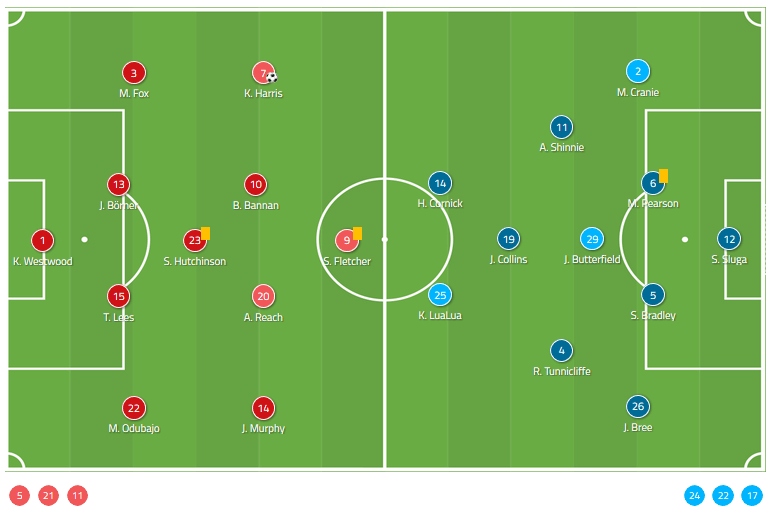
On the other hand, Luton introduced James Bree into their squad in place of Dan Potts. Jacob Butterfield stepped up to replace Pelly-Ruddock Mpanzu, who was named on the bench. Harry Cornick started for this game with James Collins dropped into an attacking midfielder. He replaced the former West Ham academy graduate Elliot Lee.
Luton’s style of play
When they were in possession, they usually focused on building attacks from the back. Two centre-backs, Sonny Bradley and Matty Pearson, would form a passing triangle with the defensive midfielder Butterfield. They maintained that triangle and circulated the ball into the middle third.
Meanwhile, the wing-backs, Martin Cranie and Bree, positioned themselves on the halfway line to connect the attack to the defence. Whenever possible, they could drop deep and offer to bring the ball up the pitch. Their positioning was crucial as Sheffield Wednesday tended to press high and with an aggressive attitude. Alongside them, Andrew Shinnie also dropped deeper than his original position. During the build-up, Luton’s formation looked similar to a 4-2-2-2.
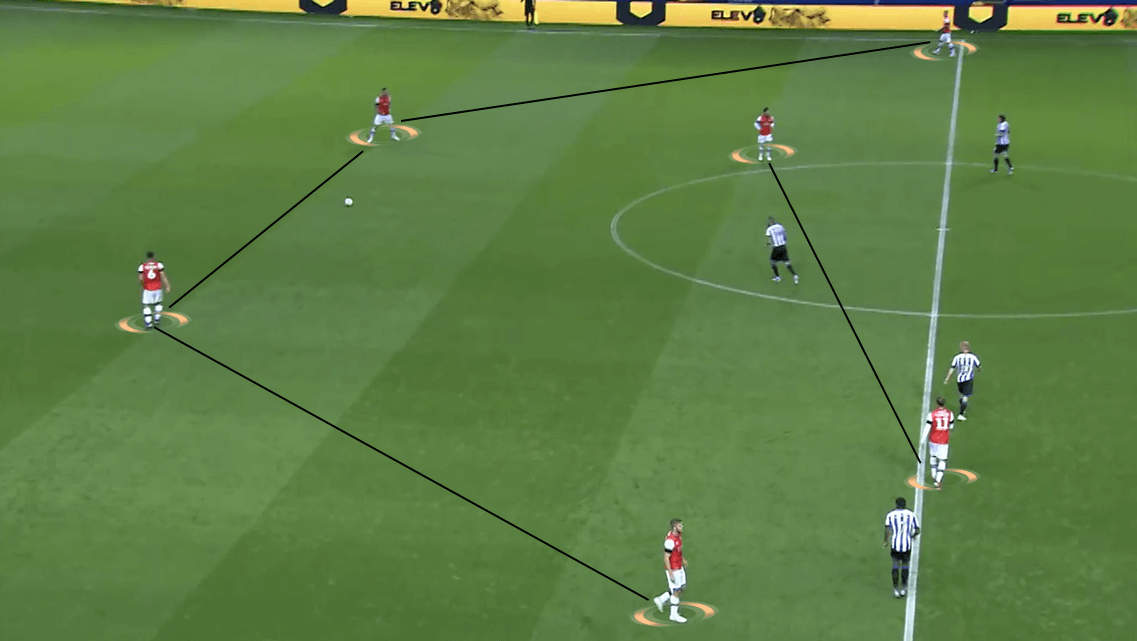
After the ball was brought into the final third, they used quick and short combinations to bypass Sheffield Wednesday’s defensive structure. Either of the two central midfielders, Shinnie or Ryan Tunnicliffe, had the license to dribble the ball up the field. They would bring their teammates into play and caught the attention of the opposition’s defenders. By doing so, they created spaces that could be capitalised by Luton players.
Furthermore, with Collins playing a bit deeper compared to his original position, the Irish striker was quite flexible in his movements. Besides from making progressive runs, he could move laterally to drag along one of the defenders. This left the gaps in between the defensive line for Cornick and Kazenga LuaLua to move in. If that option was not viable, he would sit on the shoulder of that player and offer a lofted through ball behind Sheffield Wednesday’s defensive line.
When the wing-backs overlapped, they could also become a potential attacking option. As mentioned, Collins’ movement played a crucial part in this. When he opened spaces, Bree or Cranie could run into that and wait for a pass from the ball carrier. They did make the most out of this option during the latter stage of the second half, but it was not enough for them to get the equalising goal.
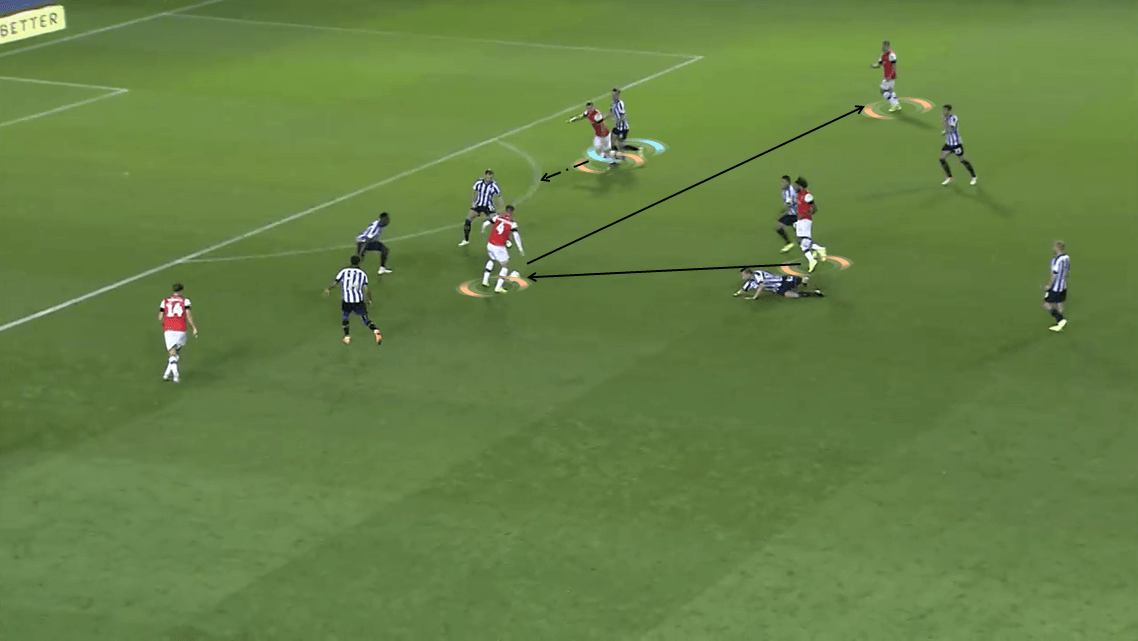
Movements seem to be the key in Luton’s tactics, even when they attacked down both flanks. By using two natural wingers as strikers, they stretched Sheffield Wednesday’s defensive line out with their runs to the wings. This allowed Collins to attack from deep and arrive later in the box for a cross or a pass.
But for the wingers, with them attacking the spaces on both sides, they could create combinations which allowed ball circulating to occur more efficiently. It also meant that the wing-backs now had the option of cutting inside and operating in the half-spaces. If possible, Shinnie and Tunnicliffe could even move wide to create a passing triangle inside the wide area.
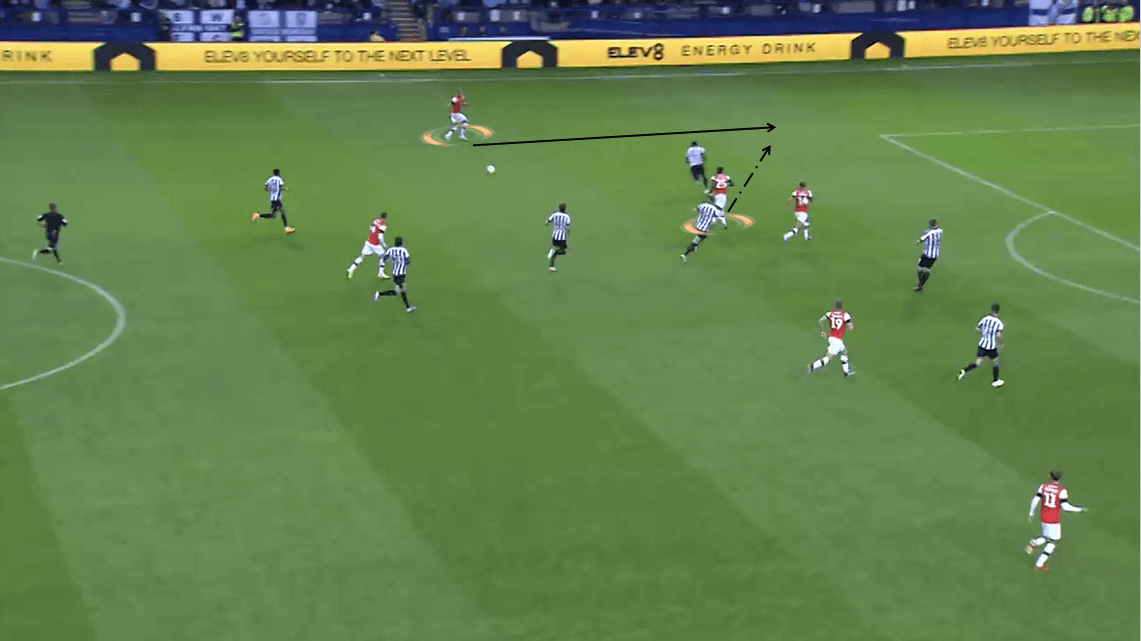
Although their transitioning process looked pretty good due to the positioning and movements from the players, they didn’t have the best day in front of goal. Most of their chances were inside the 16-yard box but they eventually went wide. They only registered two shots on target which came from LuaLua and Shinnie inside the first twenty minutes. It also worth notice that none of those two chances was xG rated above 0.1.
Their total xG rating was not very high either, which stood at 0.56. The chance that had the highest rating was Cornick’s shot from Shinnie’s free-kick earlier (0.16 xG). Cornick received the ball not being in a very positive state as he drew the attention of two Sheffield Wednesday defenders. They blocked the shooting space which eventually dragged the shot to go wide. Furthermore, almost half of Luton’s total of ten chances came from Bradley, the centre-back.
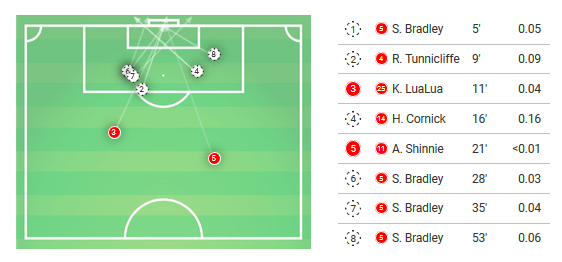
Defensively, they adapted a high, man-oriented press which required each player to responsible for one of the defenders. While the strikers split themselves up, the attacking midfielder moved centrally into that space in between them. He marked the ball carrier and attempted to recover the ball from his feet whenever possible.
Two strikers out wide would mark the possible passing options around the ball carrier. Eventually, it forced him to play a back pass to the goalkeeper or clear the ball out of that pressing area. If they switched the ball carrier, three players also shifted along and restarted the press while remaining with the same principles.
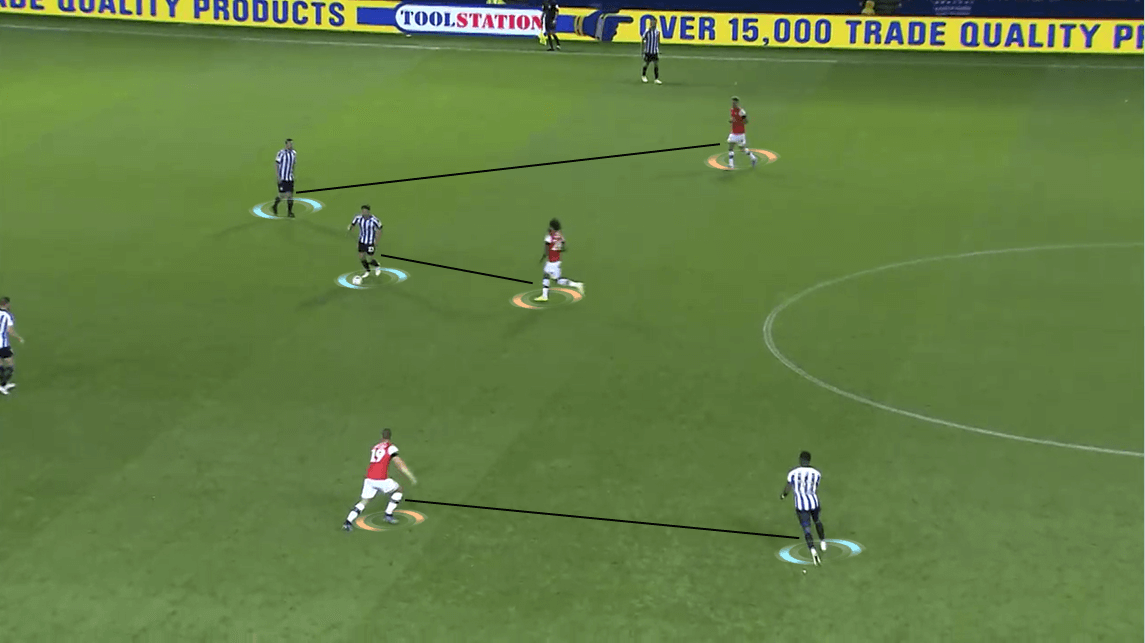
If the opposition got the ball into their half, the players would regroup and form a 4-4-1-1 defensive structure. Either the striker wouldn’t join the shape as they acted as a central target when they pushed up the pitch for a counter-attack. Collins remained the highest player in the shape while his responsibility was to mark the opposition’s central midfielders. He prevented passes that could be made towards the final third and immediately laid it to the striker up front.
Meanwhile, the midfielders stayed compact and created a shield in front of the defence. They could also overload zone 14 and narrowed the spaces between the lines. It prevented the opposition’s attackers from accessing it and capitalising to approach the 16-yard box. The defensive line stayed a bit wide and supported the midfielders in swarming the wide areas.
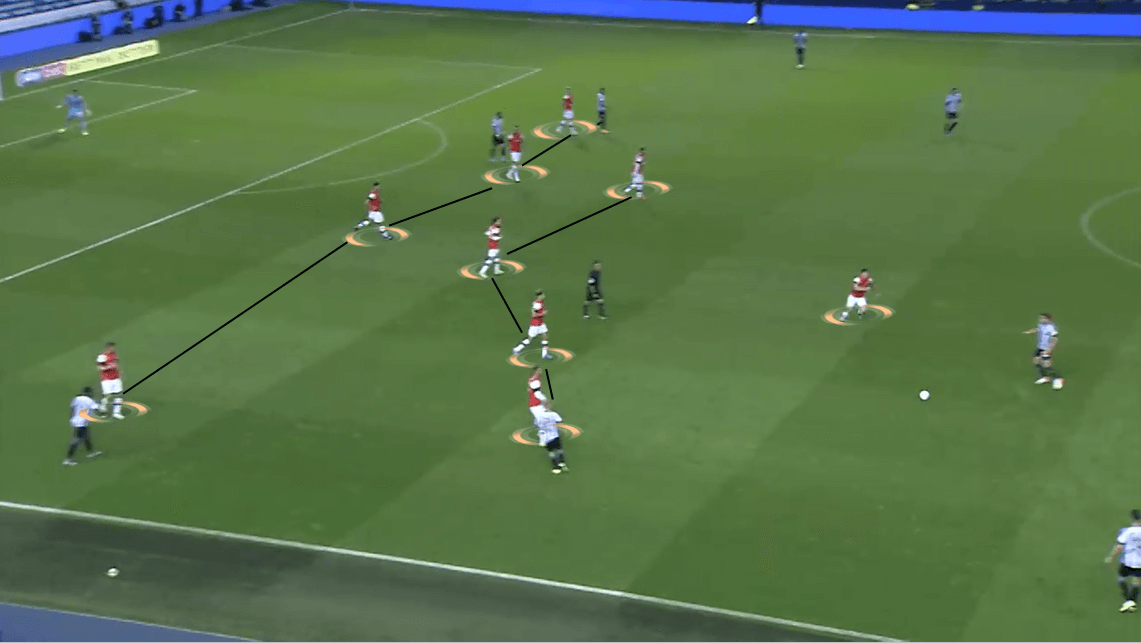
Sheffield Wednesday’s style of play
Sheffield Wednesday didn’t enjoy a good spell of possession in this match, held just 46.3% of the ball possession. But when it comes to defence, their organised structure contributed a lot to their victory against Luton.
They formed a 4-4-1-1 defensive structure inside their half and then they adapted the press towards Luton’s build-up. When the opposition distributed the ball wide, they created an overload which consisted of two defenders and two midfielders. They aimed to recover possession as soon as possible and prevented Luton from reaching the 16-yard box. If they attacked centrally, they stayed compact in front of their goal and forced Luton to make more long shots.
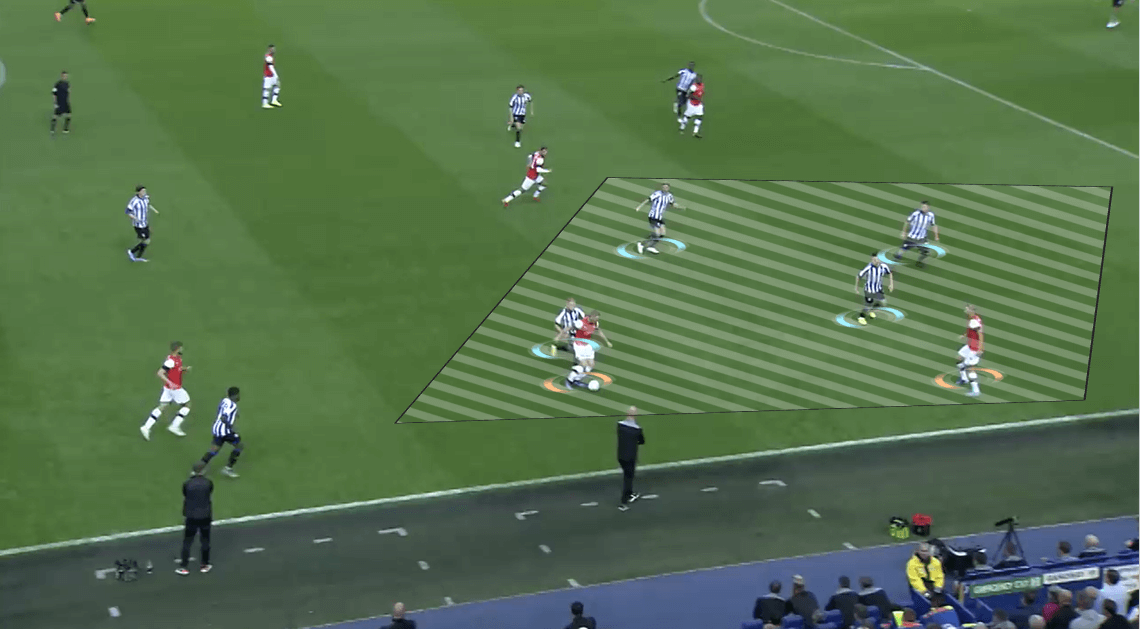
About their press, they adapted an aggressive attitude when recovering possession. Firstly, each player was responsible for a defender and they marked them until the build-up process was done or they recovered the ball. When the ball carrier approached them, they would tackle the ball and start a counter-attack inside the opponent half.
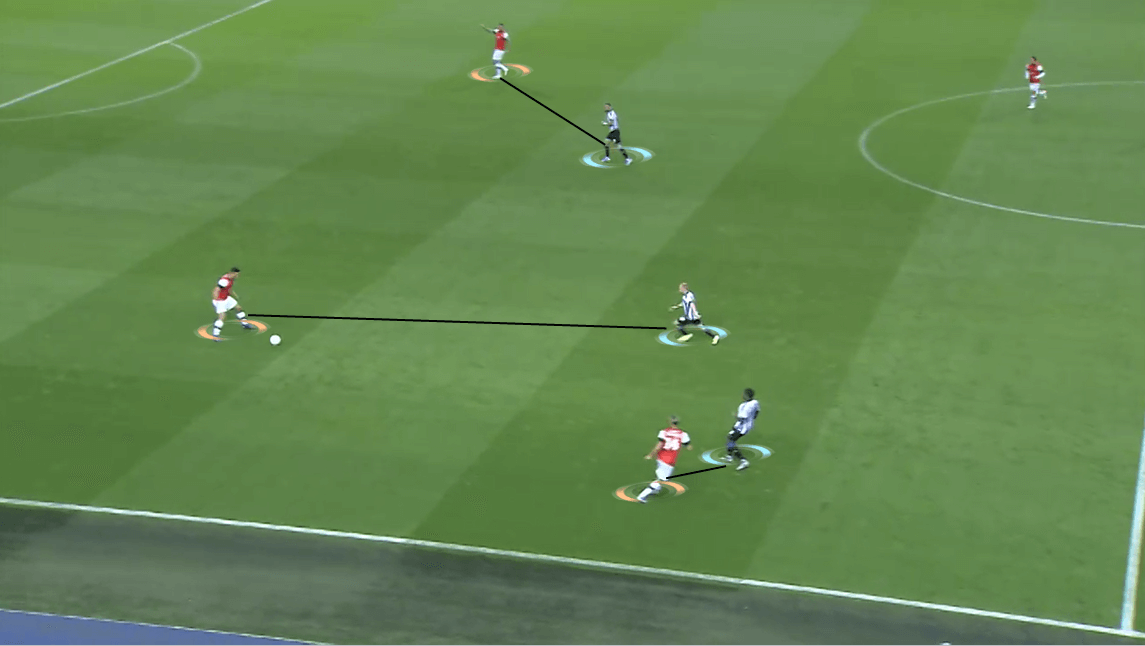
In attacks, Sheffield Wednesday formed a four-man build-up with the supports from two central midfielders. They stayed quite deep, specifically on the edge of their defensive third with the centre-backs remaining deepest. Two full-backs positioned themselves a bit higher alongside Sam Hutchinson and Barry Bannan.
Among Bannan and Adam Reach, they occasionally switched positions with each other. When one dropped deep and involved in the build-up, the other one moved higher up the pitch to create an attacking midfield trio below Steven Fletcher.
At times, Hutchinson dropped in between the centre-backs, Tom Lees and Julian Börner, to create more passing triangles in the build-up. This kept their ball circulating in a better way. He could also bring the ball out of the defensive third through his dribbles and pick out attackers up front.
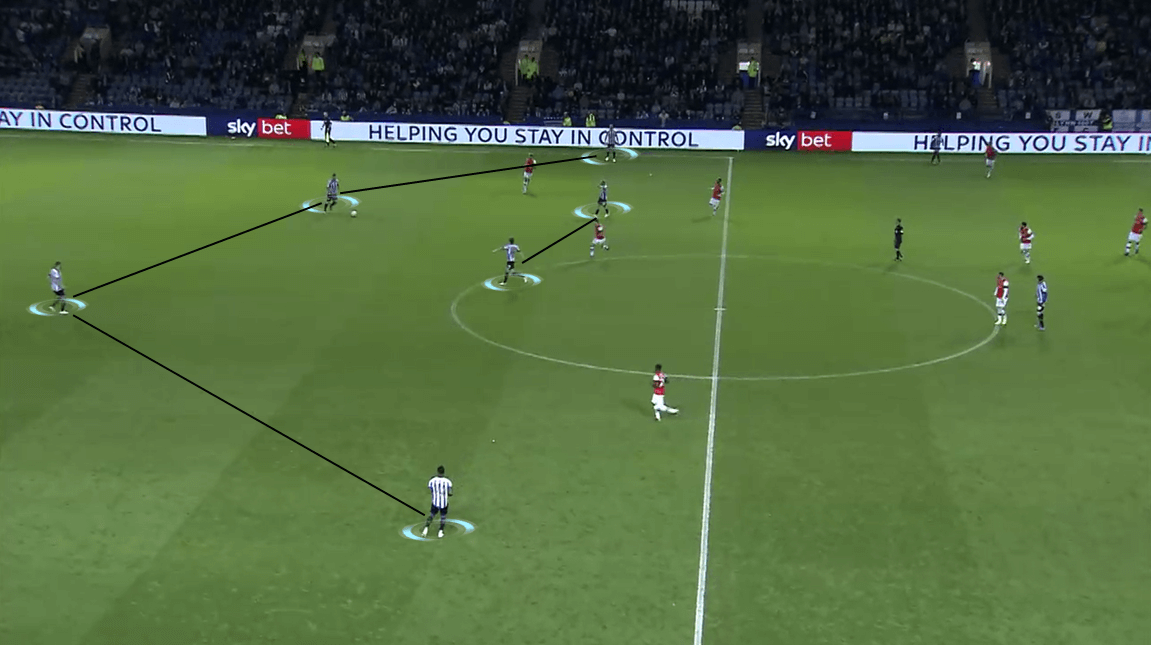
Their method of getting the ball into Luton’s final third was from long balls into space behind their defensive line. Usually, the opposition raised the line higher when they were out of possession. Since there were quite a lot of players who were still out their positions, it left vulnerable spaces inside their half for Sheffield Wednesday players to capitalise.
As Bannan stayed deeper to look out for potential receivers, Reach positioned high alongside the wingers. This turned their formation into a 4-2-3-1 with Fletcher played as the role of a target man. Reach would provide support for the former Marseille striker with his movements to drag along defenders and created more spaces.
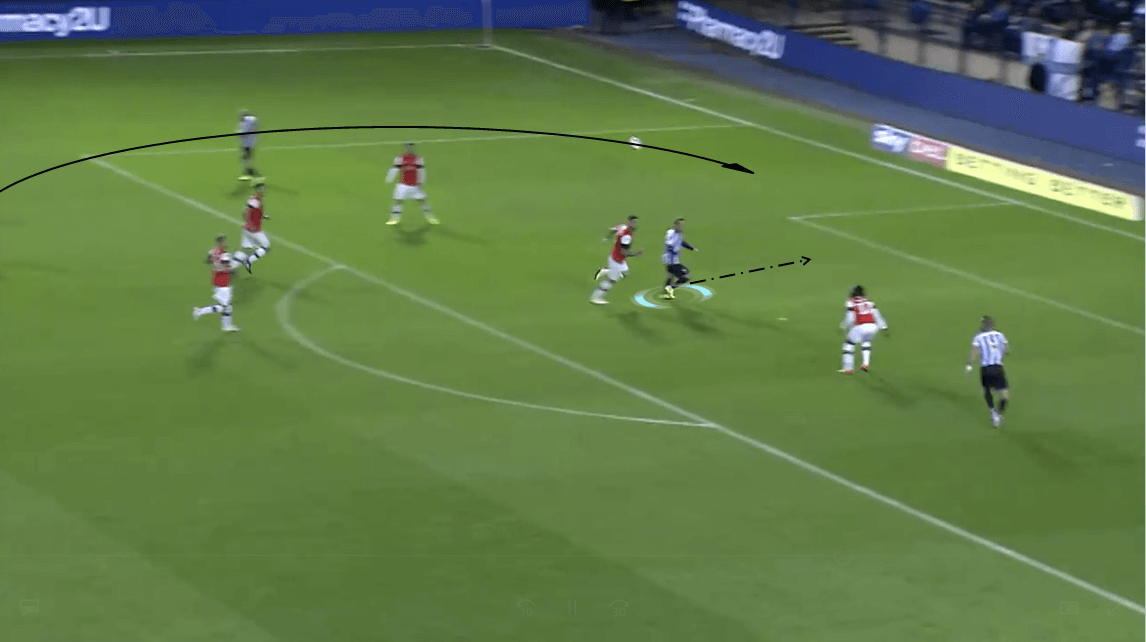
They also relied on crosses in which were divided equally into both sides. Besides from cutting inside, Jacob Murphy and Kadeem Harris also stuck to the wide area. This allowed Moses Odubajo and Morgan Fox to underlap into the half-spaces.
It doesn’t come as a surprise when the two wingers dominated the crosses inside the wings. Furthermore, Bannan also made some early crosses from his side. With the wing-oriented style they adapted, it forced Luton to stretch their shape wider.
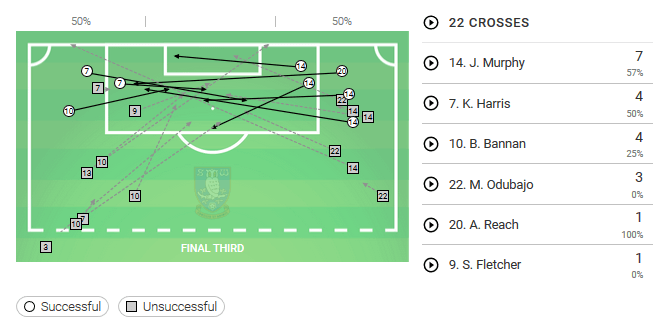
Harris’ only goal of the game also came from a similar situation on the right-hand side of Murphy. From Simon Sluga’s throw, the Croatian goalkeeper found Bradley outside of the 16-yard box. Murphy immediately stepped in and put the pressure on Luton’s centre-back, which eventually forced him to give the ball away. The Newcastle loanee made a cross into the box and found Fletcher. He headed the ball back and allowed Murphy to make an easy tap-in.
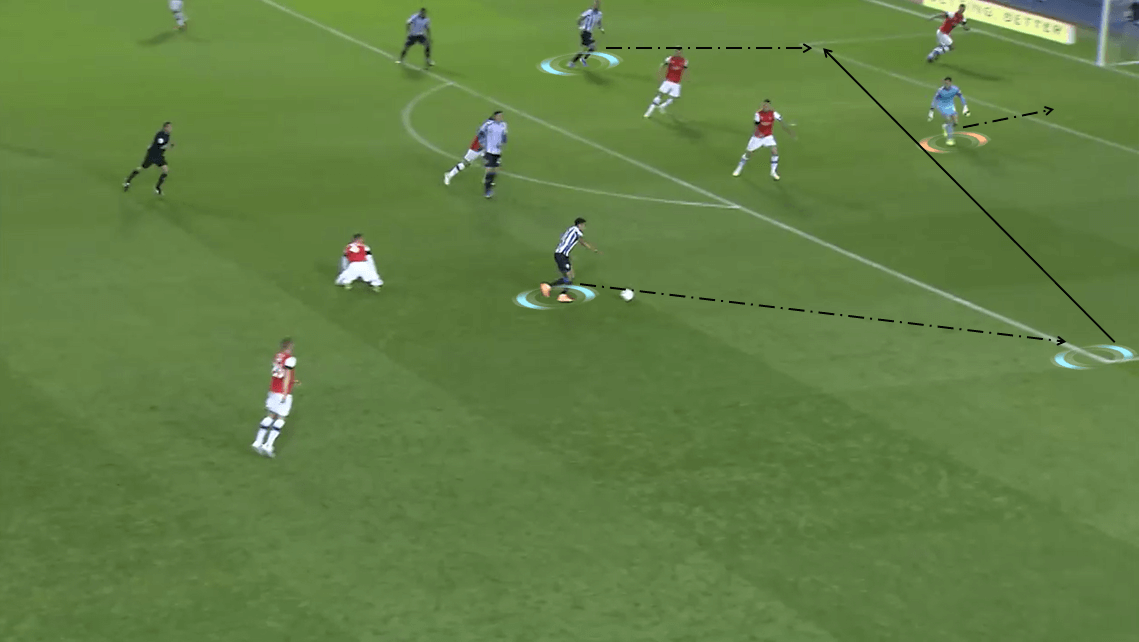
Conclusion
Sheffield Wednesday have had a very positive start to the season and they continued that form by securing three points at home. That streak will build a very solid base and allow them to think about higher expectations. Although we are still at the early stages, having good results and high confidence in the squad would help Sheffield Wednesday a lot.
For Luton Town, their journey of searching for their first win of the season is still going on. But their performance from this match is decent and they need to build on that. As Shinnie mentioned in the post-match interview, a win is edging closer for Luton. Keep that positive attitude with them and be at their best every match, they could turn the struggling start to a more positive form in the remainder of the season.

If you love tactical analysis, then you’ll love the digital magazines from totalfootballanalysis.com – a guaranteed 100+ pages of pure tactical analysis covering topics from the Premier League, Serie A, La Liga, Bundesliga and many, many more. Buy your copy of the August issue for just ₤4.99 here.




Comments